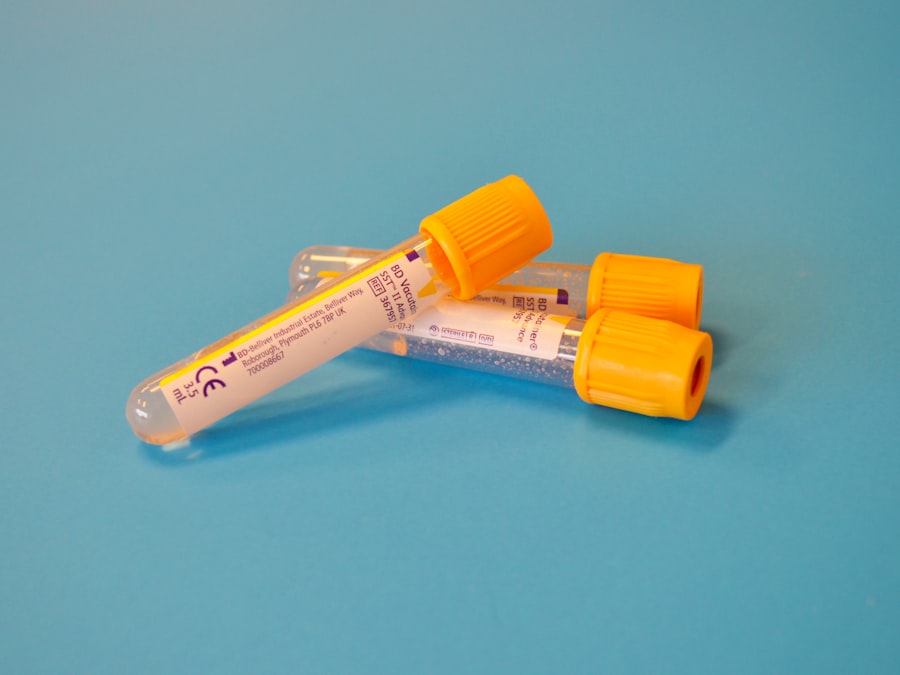Nanotechnology, the manipulation of matter on an atomic or molecular scale, has emerged as a transformative force in various fields, particularly in medicine. This innovative technology operates at the nanoscale, typically between 1 and 100 nanometers, where unique physical and chemical properties can be harnessed to develop novel therapeutic and diagnostic tools. The integration of nanotechnology into medicine has the potential to revolutionize healthcare by enhancing drug delivery systems, improving imaging techniques, and enabling targeted therapies that minimize side effects.
As researchers continue to explore the vast possibilities of nanomedicine, the implications for patient care and treatment outcomes are profound, promising a future where diseases can be tackled with unprecedented precision. The significance of nanotechnology in medicine cannot be overstated. It represents a paradigm shift in how we approach disease management and treatment.
By leveraging the unique properties of nanoparticles—such as their high surface area-to-volume ratio and ability to penetrate biological barriers—scientists are developing innovative solutions that were previously unimaginable. From targeted drug delivery systems that release medication directly at the site of disease to advanced imaging techniques that allow for earlier detection of conditions, nanotechnology is paving the way for more effective and personalized medical interventions. As we delve deeper into the various applications of nanotechnology in medicine, it becomes clear that this field holds immense promise for improving health outcomes and enhancing the quality of life for patients around the globe.
Key Takeaways
- Nanotechnology has revolutionized medicine by enabling targeted drug delivery, improved imaging and diagnostics, cancer treatment, and tissue engineering.
- Nanotechnology in drug delivery allows for precise targeting of drugs to specific cells or tissues, reducing side effects and improving efficacy.
- Nanotechnology in imaging and diagnostics has led to the development of highly sensitive and specific imaging techniques for early disease detection and monitoring.
- Nanotechnology in cancer treatment has shown promising results in delivering chemotherapy drugs directly to cancer cells, reducing damage to healthy tissues.
- Nanotechnology in tissue engineering and regenerative medicine holds potential for creating artificial organs and tissues for transplantation and regenerating damaged tissues.
Nanotechnology in Drug Delivery
Enhancing Drug Delivery with Nanotechnology
Nanotechnology has shown immense promise in revolutionizing the field of medicine, particularly in the development of advanced drug delivery systems. Traditional methods of drug delivery often face challenges such as poor solubility, rapid metabolism, and non-specific distribution, which can lead to suboptimal therapeutic outcomes. However, nanoparticles can be engineered to encapsulate drugs, protecting them from degradation and allowing for controlled release over time.
Targeted Drug Delivery for Improved Therapeutic Outcomes
This targeted approach not only enhances the bioavailability of medications but also minimizes systemic side effects, as drugs can be delivered directly to the affected tissues or cells. For instance, liposomes, dendrimers, and polymeric nanoparticles are being extensively researched for their ability to improve the pharmacokinetics of various therapeutic agents. Moreover, the versatility of nanoparticles allows for the incorporation of multiple therapeutic agents within a single delivery system.
Combination Therapies and Personalized Medicine
This multi-drug approach can be particularly beneficial in treating complex diseases such as cancer, where a combination of therapies may be required to overcome resistance mechanisms. By utilizing nanotechnology, researchers are developing smart drug delivery systems that respond to specific stimuli—such as pH changes or temperature variations—enabling precise control over drug release. This level of sophistication not only enhances treatment efficacy but also opens new avenues for personalized medicine, where therapies can be tailored to individual patient profiles based on their unique biological characteristics.
Nanotechnology in Imaging and Diagnostics

In addition to drug delivery, nanotechnology is making significant strides in the field of imaging and diagnostics. Traditional imaging techniques often lack the sensitivity required to detect diseases at their earliest stages. However, nanoparticles can be engineered to improve contrast in imaging modalities such as magnetic resonance imaging (MRI), computed tomography (CT), and ultrasound.
For example, superparamagnetic iron oxide nanoparticles have been developed to enhance MRI contrast, allowing for more accurate visualization of tumors and other pathological conditions. This advancement not only aids in early diagnosis but also facilitates better monitoring of disease progression and treatment response. Furthermore, the use of nanosensors is revolutionizing diagnostic capabilities by enabling rapid and sensitive detection of biomarkers associated with various diseases.
These nanosensors can detect minute quantities of biological molecules, providing valuable information about a patient’s health status. For instance, gold nanoparticles have been utilized in biosensors for the detection of cancer biomarkers in blood samples, offering a non-invasive method for early cancer diagnosis. The integration of nanotechnology into imaging and diagnostics not only enhances our ability to identify diseases but also paves the way for more effective monitoring and management strategies, ultimately leading to improved patient outcomes.
Nanotechnology in Cancer Treatment
Cancer treatment has been one of the primary beneficiaries of advancements in nanotechnology. The complexity of cancer biology necessitates innovative approaches that can address the limitations of conventional therapies such as chemotherapy and radiation. Nanoparticles can be designed to selectively target cancer cells while sparing healthy tissues, thereby reducing side effects and improving therapeutic efficacy.
For instance, researchers are developing targeted nanoparticles that can deliver chemotherapeutic agents directly to tumor sites, enhancing drug accumulation within the tumor while minimizing exposure to surrounding healthy cells. In addition to targeted drug delivery, nanotechnology is also being explored for its potential in photothermal therapy and immunotherapy. Photothermal therapy involves using nanoparticles that absorb light and convert it into heat, selectively destroying cancer cells without harming adjacent tissues.
This technique has shown promise in preclinical studies and is being translated into clinical trials. Similarly, nanoparticles are being utilized as carriers for immune-modulating agents, enhancing the body’s immune response against tumors. By harnessing the power of nanotechnology, researchers are not only improving existing cancer treatments but also paving the way for novel therapeutic strategies that could significantly alter the landscape of oncology.
Nanotechnology in Tissue Engineering and Regenerative Medicine
The application of nanotechnology extends beyond drug delivery and diagnostics; it is also making significant contributions to tissue engineering and regenerative medicine. The ability to create scaffolds at the nanoscale allows for better mimicry of the natural extracellular matrix, which is crucial for cell adhesion, proliferation, and differentiation. Nanofibers made from biodegradable polymers can be engineered to support tissue regeneration by providing a conducive environment for cell growth while gradually degrading as new tissue forms.
This approach holds great promise for repairing damaged tissues or organs, offering potential solutions for conditions such as heart disease or spinal cord injuries. Moreover, nanotechnology enables the incorporation of bioactive molecules into scaffolds to enhance tissue regeneration further. Growth factors or signaling molecules can be loaded onto nanoparticles that are then embedded within scaffolds, promoting cellular responses that facilitate healing and regeneration.
This synergistic approach not only accelerates tissue repair but also improves functional outcomes for patients. As research continues to advance in this area, the potential applications of nanotechnology in regenerative medicine are vast, ranging from skin grafts to organ replacements, ultimately transforming how we approach tissue repair and restoration.
Ethical and Safety Considerations in Nanomedicine

As with any emerging technology, the integration of nanotechnology into medicine raises important ethical and safety considerations that must be addressed. The unique properties of nanoparticles can lead to unforeseen interactions within biological systems, raising concerns about their long-term effects on human health and the environment. Regulatory frameworks are still evolving to keep pace with advancements in nanomedicine, necessitating comprehensive safety assessments before new products can be approved for clinical use.
Researchers must prioritize understanding the biocompatibility and toxicity profiles of nanoparticles to ensure that they do not pose risks to patients or healthcare providers. Additionally, ethical considerations surrounding access to nanomedicine must be taken into account. As these technologies develop, there is a risk that they may exacerbate existing health disparities if access is limited to certain populations or regions.
Ensuring equitable access to innovative treatments is crucial for maximizing the benefits of nanotechnology in medicine. Furthermore, issues related to patient consent and privacy must be carefully navigated as personalized medicine becomes more prevalent through the use of nanoscale technologies. Addressing these ethical challenges will be essential for fostering public trust and ensuring that advancements in nanomedicine are implemented responsibly.
Future Perspectives and Challenges in Nanomedicine
Looking ahead, the future of nanomedicine is filled with promise but also presents several challenges that must be addressed for its full potential to be realized. Continued research is essential to further understand the mechanisms by which nanoparticles interact with biological systems and to optimize their design for specific applications. As our knowledge expands, so too will our ability to create more effective therapies tailored to individual patient needs.
Collaboration between researchers, clinicians, regulatory bodies, and industry stakeholders will be vital in driving innovation while ensuring safety and efficacy. However, challenges remain regarding public perception and acceptance of nanomedicine. Misinformation about nanotechnology can lead to skepticism among patients and healthcare providers alike.
Education and outreach efforts will be crucial in demystifying these technologies and highlighting their benefits while addressing safety concerns transparently. Additionally, as nanomedicine continues to evolve, ongoing dialogue about ethical considerations will be necessary to navigate complex issues related to equity, access, and consent. By proactively addressing these challenges, we can harness the full potential of nanotechnology in medicine and pave the way for a healthier future for all.
While exploring the advancements in medical technology, particularly the role of nanotechnology in healthcare, it’s also interesting to consider other technological innovations that impact our daily lives. For instance, the integration of technology in personal accessories like smartwatches is also noteworthy. A related article that discusses this is “Stay Stylish with Wear OS by Google,” which explores how smartwatches not only serve as fashion accessories but also incorporate significant functionalities that can keep us connected and perhaps in the future, might integrate health-monitoring nanotechnologies. You can read more about this topic by visiting Stay Stylish with Wear OS by Google.
FAQs
What is nanotechnology?
Nanotechnology is the manipulation of matter on an atomic and molecular scale. It involves the creation and use of materials, devices, and systems through the control of matter at the nanometer scale.
How is nanotechnology used in medicine?
Nanotechnology is used in medicine to develop new tools for the diagnosis and treatment of diseases. It allows for targeted drug delivery, imaging at the molecular level, and the development of new materials for medical devices.
What are the benefits of using nanotechnology in medicine?
The use of nanotechnology in medicine can lead to more precise and effective treatments, reduced side effects of medications, early detection of diseases, and the development of personalized medicine.
What are some examples of nanotechnology in medicine?
Examples of nanotechnology in medicine include nanoparticles for drug delivery, nanoscale imaging techniques, nanomaterials for tissue engineering, and nanosensors for detecting biomarkers of diseases.
What are the challenges of using nanotechnology in medicine?
Challenges of using nanotechnology in medicine include potential toxicity of nanoparticles, regulatory issues, manufacturing challenges, and the need for further research to understand the long-term effects of nanomaterials in the body.

